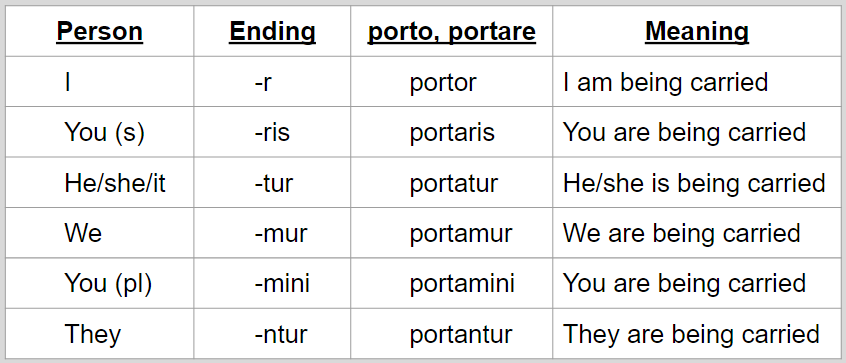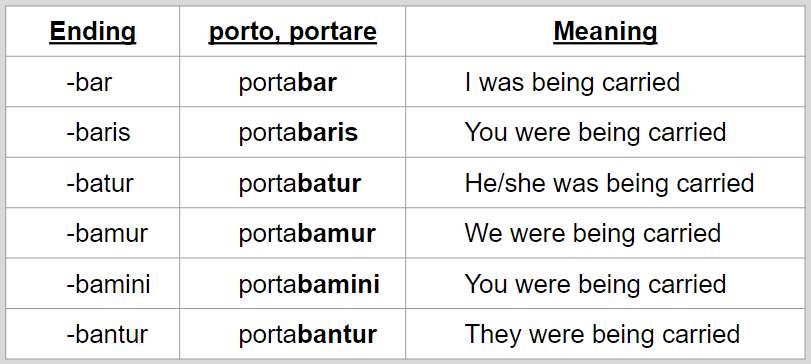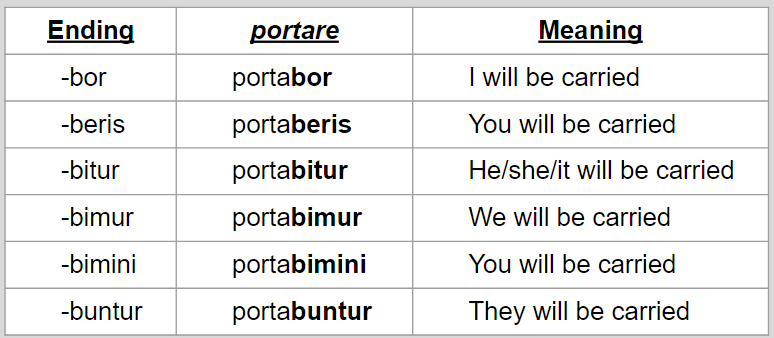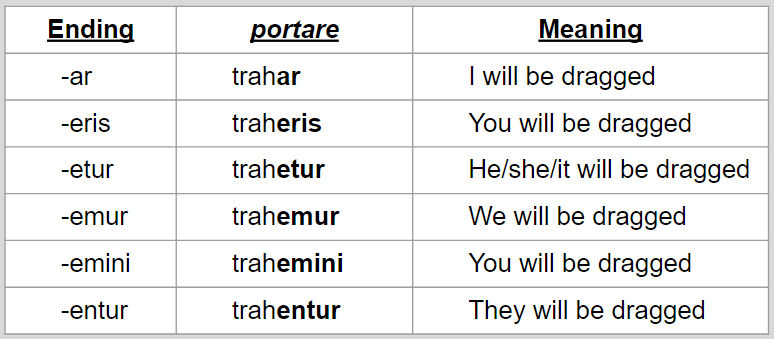Passive Verbs: Change of Subject
January Latin Challenge: Day 21 of 31
Welcome back to bambasbat and the January Latin Challenge. For Day 21, we are starting a new form of verb!
WHAT! Passive verbs?!
I have to learn more verb endings!?
Are you JOKING?!
This is what I hear every single year I introduce passive verbs to my GCSE classes. But after about 2 lessons they actually like them more than active verbs!
In this post I am going to give you a run down of passive verbs in all 6 tenses, how they are formed and how to translate them. For a more detailed explanation of each one, make sure you are subscribed to bambasbat to get those posts in the final week of the January Latin Challenge.
To help you follow this post, I strongly suggest you go and download my free guide to all Latin verb endings - it has all the active and passive endings, so will be really useful as you start getting familiar with passive verbs.
Easy to spot, fun to translate
Passive verbs are actually really easy to spot and translate once you get your head around them.
In active sentences, the nominative is the person in charge of the action, and the accusative is the thing receiving the action.
The boy kicked the horse.
The boy is nominative, the horse is accusative.
However, for a passive verb, the nominative is not doing the action - they are a “passive participant” in the action - it is being done to them.
The boy was kicked by the horse.
The boy is still the nominative, but he is no longer doing the action.
“The boy” is the subject (nominative) in both sentences, but in one he is kicking, and in the other he is being kicked. That’s a passive.
Present Passives
In Latin, passives are quite easy to spot - they look quite like the active verbs, but with clear and key differences. The present tense, for example, uses the present stem (the first principal part) and then adds on quite unique endings.
The 2nd person plural especially is very different to the active, but makes it recognisable.
You can translate portor as I am being carried, or just I am carried, but keep the being in mind to help you remember that it is passive. Someone else is doing the carrying, but I am the subject of the sentence.
These endings also form the basis for the imperfect passive and the future passive endings.
Imperfect Passives
Imperfect passives have the classic -ba- syllable added to the present stem, and then the passive endings are tacked onto the end of this.
Future Passives
The future passive has the same -bo- syllable for the 1st person, portabor, but then changes - portaberis. Luckily the rest have the -bi- and -bu- from the active future tense.
Remember that there are 2 versions of the simple future - the 1st & 2nd conjugation, and the 3rd & 4th conjugation. So for the 3rd and 4th conjugation passives, it is not -bor, -beris, -bitur, but instead -ar, -eris, -etur.
This may be confusing, as it seems similar to the present tense. However, the thematic vowel has changed! traho in the present active goes traho trahis trahit, but in the future passive is trahor, traheris, trahetur. The one you need to watch for is the 2nd person singular - that is the same as the present passive. However, all the others use an -e- rather than an -i- as you find in the present passive.
The future rule stands:
1st & 2nd future -b-, 3rd and 4th always -e- [except in the 1st person].
Perfect Passives
Now for the perfect passive. For this one, you take the 4th principal part - the perfect passive participle. portatus, -a, -um (the perfect passive participle) acts like an adjective here, so you have to use the singular nominative ending for I, You, He/she/it, and you have to use the plural nominative ending for We, You (plr), They. You only use the nominative case endings, but it changes based on the gender of the nominative (us, a, um)
Then you figure out who is doing it with the present version of esse (to be) that is attached to the end of the participle.
So for “I have been carried”, I identify as female so I use portata, then I add sum to get portata sum. If the table has been carried, I would use portatum est - a 3rd person singular, neuter ending.
Pluperfect passives
This is the same for the pluperfect passive, using the 4th principal part in agreement with the subject, and then adding the verb “to be” - this time in the IMPERFECT tense depending on the nominative.
Future Perfect Passives
And again it is the same for the future perfect passive - the 4th principal part, with the verb “to be” in the FUTURE this time.
So that’s an overview of passive verbs in every tense! If you want a more in depth account of a particular tense in the passive, along with examples and exercises, subscribe to the channel to get those upcoming posts straight to your inbox.
I hope you have found this post enjoyable and most of all helpful! Let me know if you have any questions in the comments. Thanks for reading, and I’ll see you tomorrow for Day 22 of the January Latin Challenge on bambasbat!








